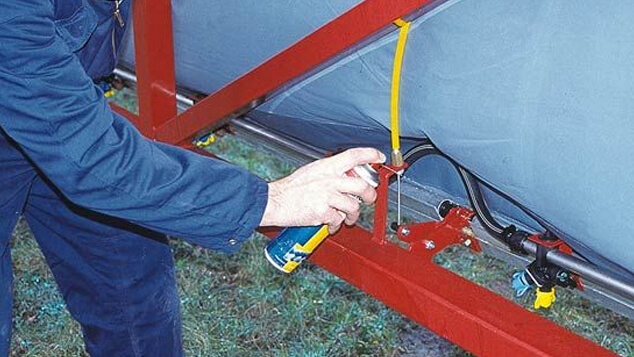Sprayer service
Punctuality is the key word in modern plant protection. This makes heavy demands on the function and reliability of the spraying equipment. Was the sprayer stored a little quickly when the spraying season was over? Then go thoroughly over the sprayer during the quiet off-season.
We give you below a checklist of things of importance to the sprayer's reliability of operation and ability to distribute plant protection chemicals as precisely as possible

Booms
For the boom to operate properly, it is important that it has been adjusted and lubricated correctly. This includes correct restriction of hydraulic oil to prevent boom damage when folding and unfolding it. The instruction manual indicates adjustment and lubrication of the various boom types.
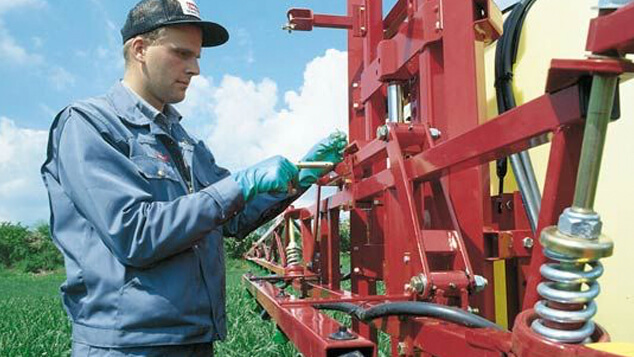
Boom tubes
Check all tubes and hoses for damages and fastening.
Change damaged hoses and tighten hoses, which may have become loose.
If leaks persist, dismantle and clean and lubricate the O-ring and re-assemble
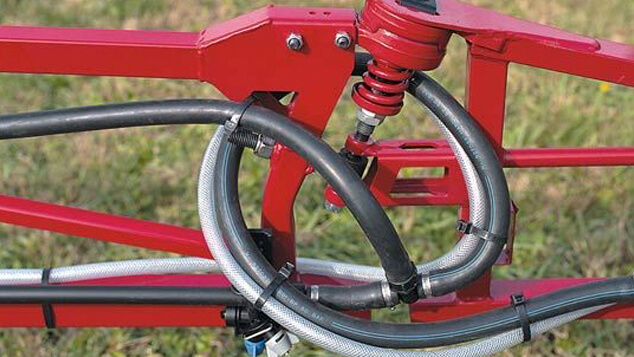
Cleaning
Clean sprayers are:
- Safe for persons around the sprayer and the environment
- Ready for action
- Not damaged by the pesticide and their solvents
It is therefore most important to clean the sprayer immediately after every use, both internally and externally. A thorough cleaning ensures that everything functions correctly and at the same time prevents spray damage due to unintended mixture of pesticides.
Together with cleaning, the sprayer should be tested with clean water and all functions and operating valves activated to reveal potential problems and leakages, which should be immediately rectified.
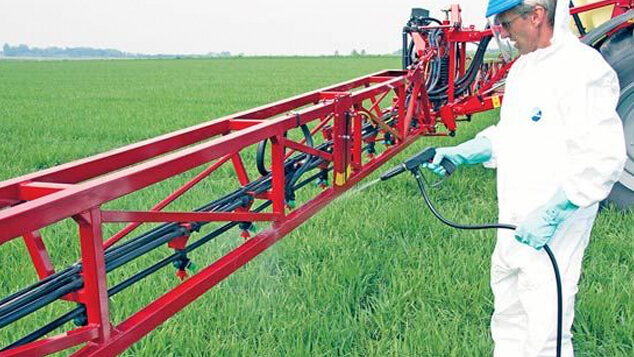
Control unit
Check the function of the control unit with clean water. If the nozzles drip when the main ON/OFF is closed, it is likely that the valve ball and seat are worn. Change if necessary.
The boom section valves must also close completely. Open the main ON/OFF and all section valves with the pump working. When the return hose from the constant pressure valves is removed and the housing drained, no water must appear from the valves. If the section valves are not completely sealed, the valve cone should be replaced. Failure to do so reduces capacity and will show incorrect data on the sprayer computer.
Finally all movable parts of the control unit operating handles should be lubricated with oil.
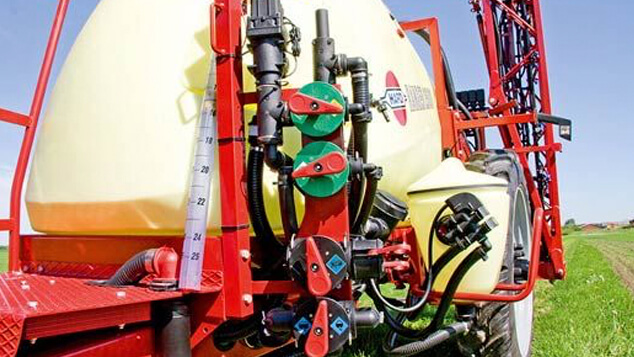
Filters
Many pesticides leave residues, which may become affixed to the filters. Disassemble the suction filter, self-cleaning filter, control unit filter, line filters and nozzle filters and clean them with a brush and soapy water.
Overnight soaking of the filters will usually be advantageous.
Check the filter inserts and change damaged ones if any.
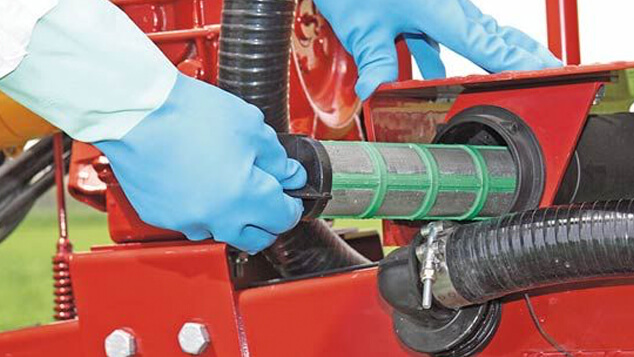
Nozzles
The condition of the nozzles is of critical importance in achieving an even spray distribution across the boom and consequently a good deposit of the pesticide. Carry out a visual control of the spray pattern of all nozzles when spraying clean water at normal working pressure. The spray pattern must be regular fan-shaped for normal flat fan spray nozzles. Irregularities are a sign of damage or wear.
Calibrate the flow rate of the nozzles with a measuring jug. The precision of the nozzles and distribution is acceptable with flow rates of up to 10% above the table values. If the flow rate is above 10% in excess of standard, the nozzles are worn and all nozzles should be replaced.
Remove the turn plate of the TRIPLET nozzle holder and lubricate with a little oil or grease on the plate. This will ensure the TRIPLET is always easy to turn when changing to another nozzle.
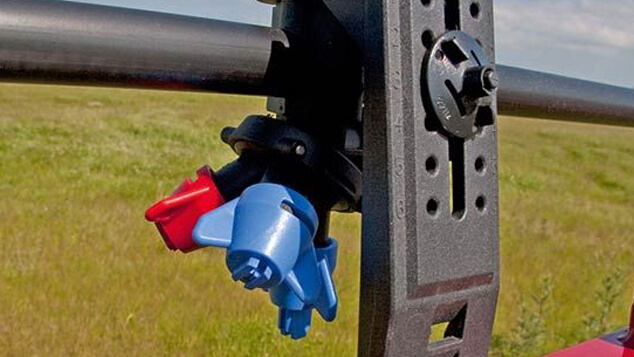
Pressure gauge
The glycerin-filled pressure gauge is a precision instrument and must be stored frost-free. ABS casings will absorb moisture so the casing must be punctured to prevent damage.
A simple way of checking the gauge is to mount a completely new set of nozzles, which are known to match the values of the nozzle table. At a fixed working pressure – e.g. 3 bar – the nozzle flow rate is calibrated with a measuring jug. If the flow rate of the nozzles matches the table value at this pressure, the pressure gauge is OK.
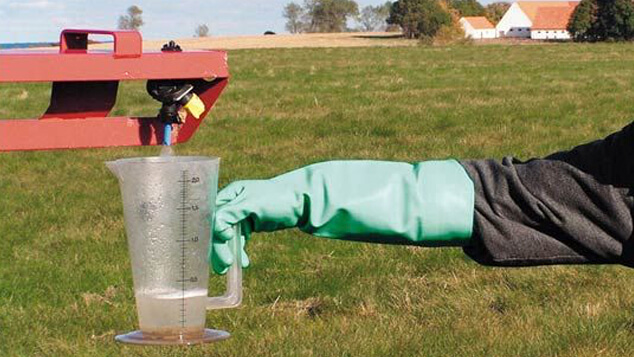
P.T.O.
Check that the guards of the transmission shaft are in good condition and lubricate the shaft. The shaft must be prevented from rotating when in use by the chains on the shaft.
It is also important that the profile tubes are well lubricated so that the shaft can move backwards and forwards without hindrance during operation.
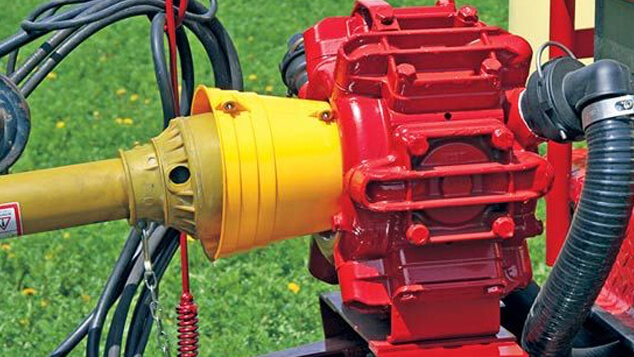
Pump
Check the valves for failure and wear. If wear is found, it is recommended to change all valves at the same time. Use new valve sealing rings when the valves are re-assembled.
Check the diaphragms for cracks. Should just one diaphragm have a crack, change all diaphragms at the same time, as those not changed will be functioning on borrowed time and are likely to fail in the near future.
Finally grease the pump. Only a few pumps of the grease gun are necessary
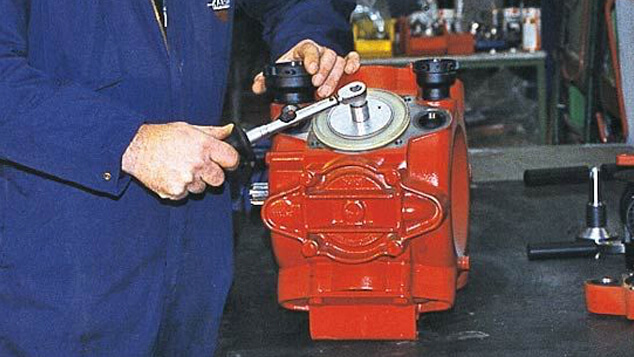
Rust prevention
Many pesticides are very aggressive, discolour paint, and can be extremely difficult to wash off when dried on.
It is therefore recommended to apply to all metal parts of the sprayer a thin layer of penetrating, water-repellent rust prevention oil before putting the sprayer into service. Many suitable products are available on the market, which after application leave a protective oil film. The sprayer can then be washed completely clean.
